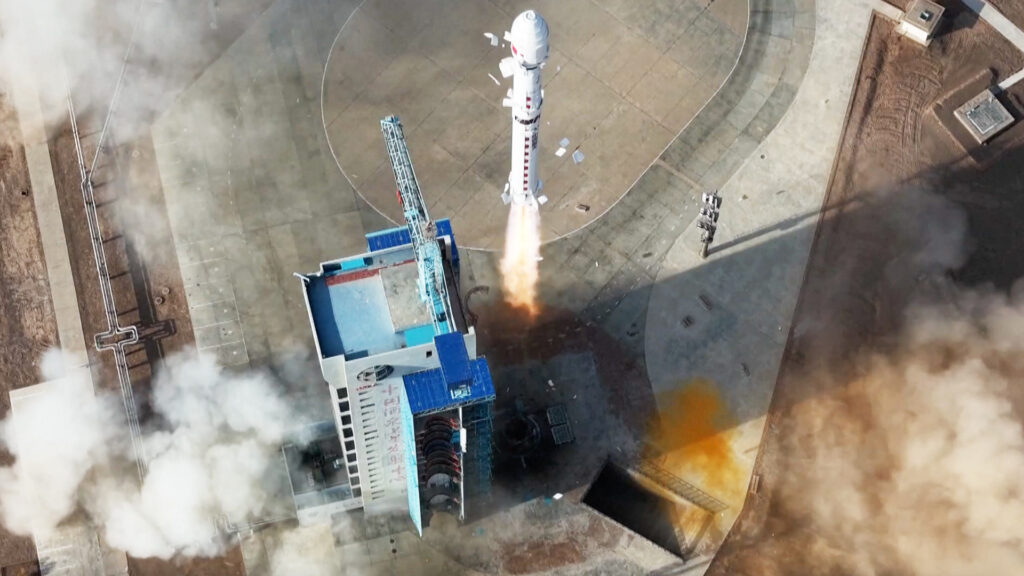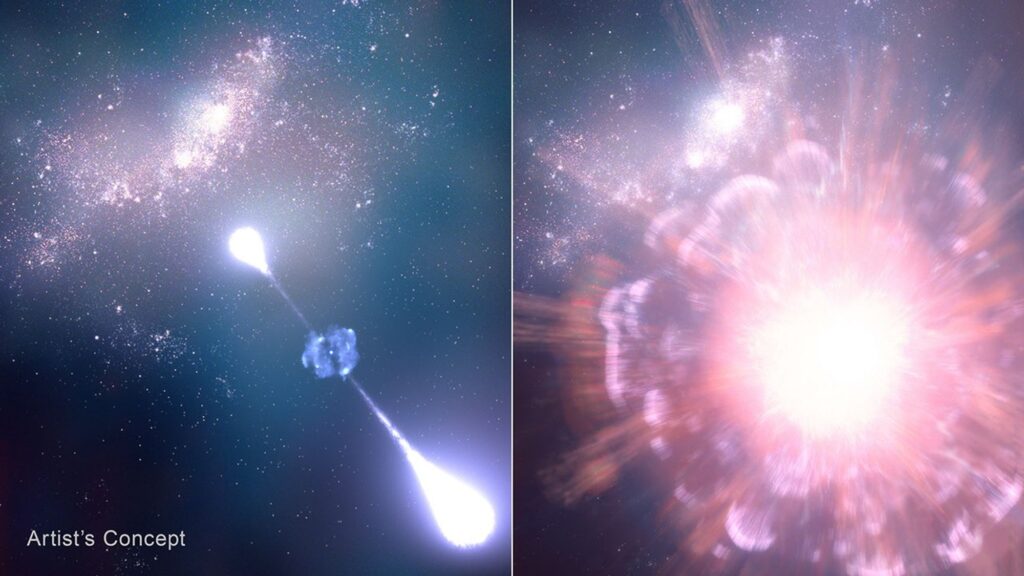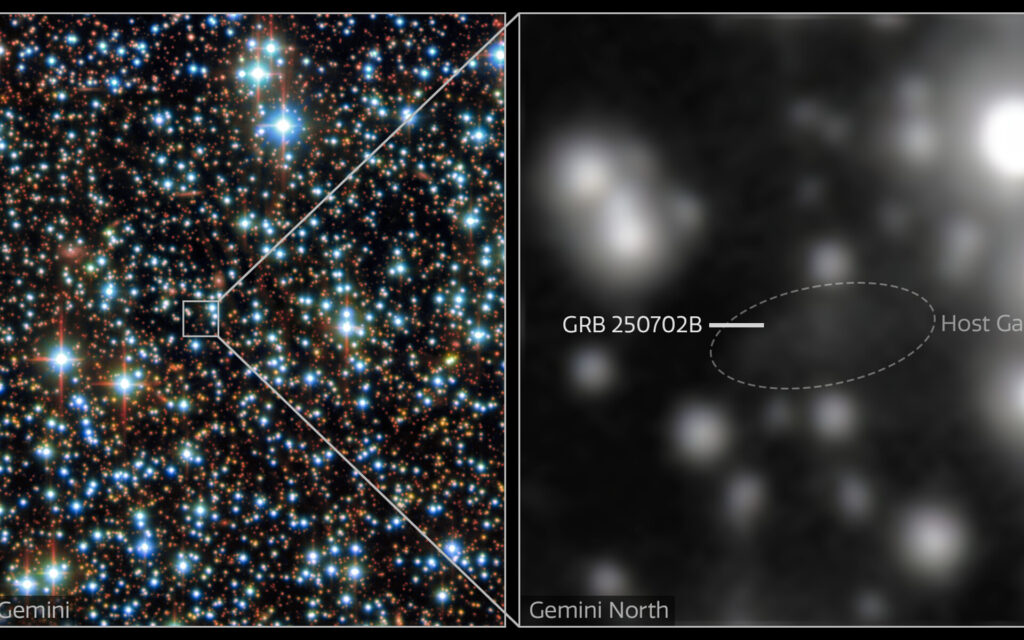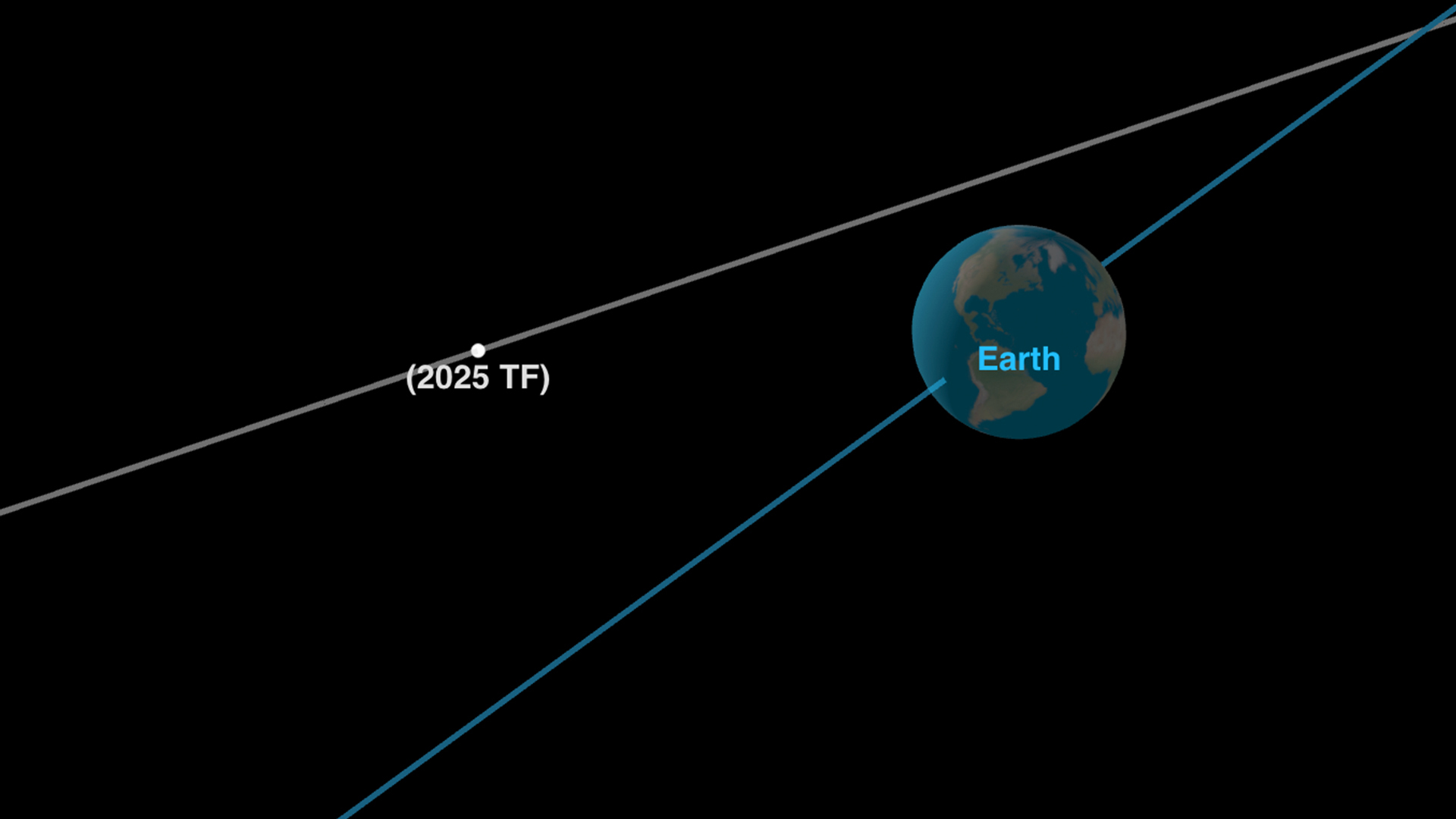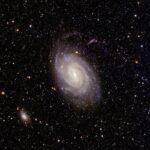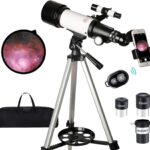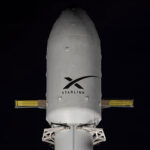Now Reading: See the moon and Saturn put on a sky show together on Oct. 5
-
01
See the moon and Saturn put on a sky show together on Oct. 5
See the moon and Saturn put on a sky show together on Oct. 5
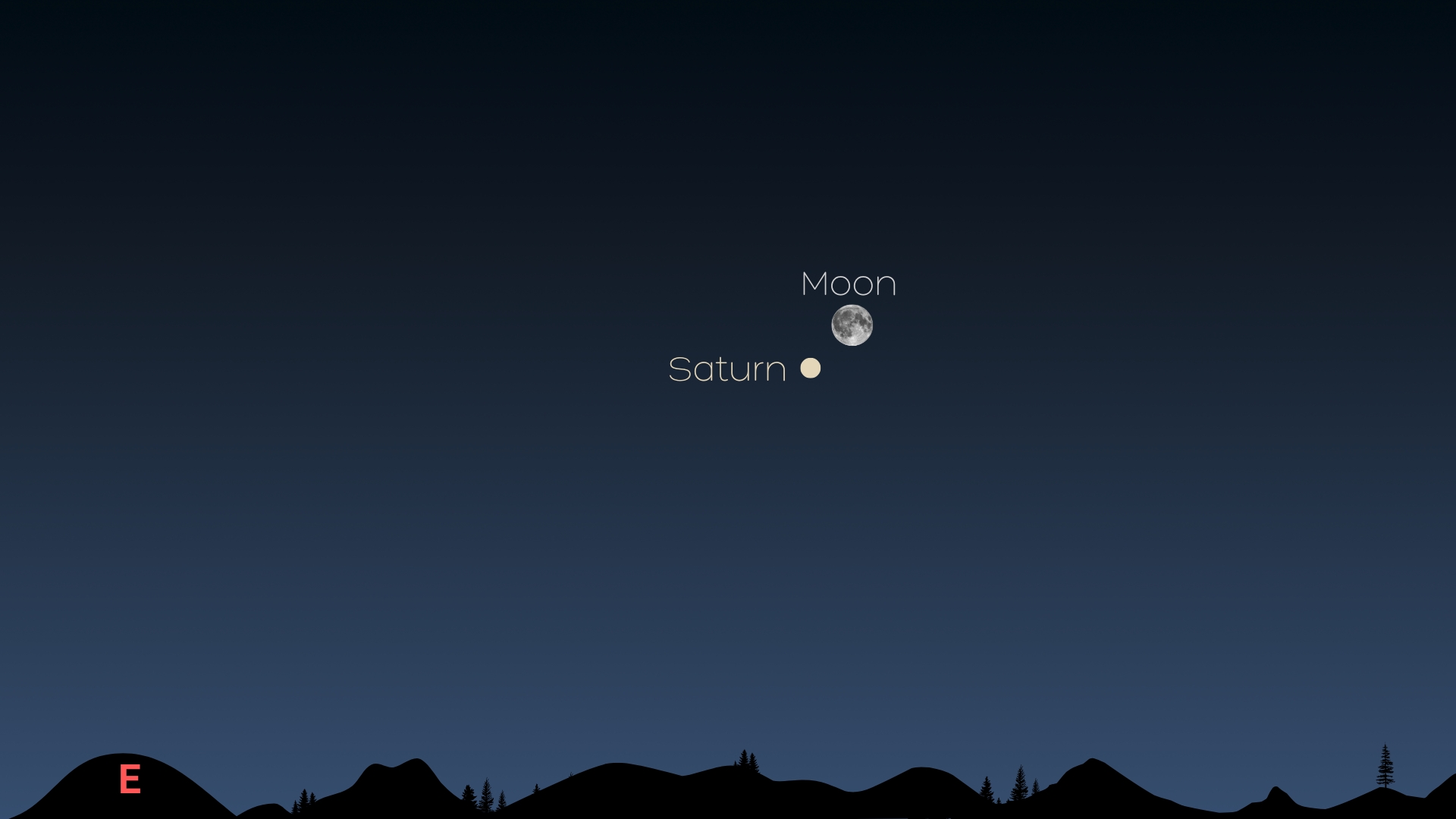
Sunday evening (Oct. 5) will bring us a fine opportunity to make a positive identification of what many consider to be the most beautiful of all telescopic objects, the ringed planet Saturn. And another celestial body will help point the way to it: the moon, which will be 24 hours from officially turning full — also this year’s Harvest Full Moon.
As I have noted over the years here at Space.com, to the naked eye, Saturn does not possess any outstanding features to call attention to it. It lacks the dazzling, eye-popping brilliance of Venus or Jupiter and it does not have the fiery orange-yellow color of Mars. Instead, it looks like a bright yellowish-white “star”. Around 8 p.m. local daylight time, look about one-quarter of the way up from the east-southeast horizon, and you’ll spot it — even if you don’t immediately realize it’s the solar system’s ringed wonder.
But on Sunday, Saturn will sit just below the moon, making it easy to track down. If the skies are clear, it’s a perfect chance to invite friends and neighbors over to see two of the best sights in the night sky.
First, the moon
First, check out the moon. A full moon looks “flat” and one-dimensional and its brilliance may temporarily dazzle the eye. Sunday’s moon is not quite full at 98.5% sunlit, but it will still appear dazzlingly bright. Probably the most noteworthy lunar feature is Tycho, a prominent lunar impact crater located in the southern lunar highlands, named after the Danish astronomer Tycho Brahe. It appears as a bright spot in the southern highlands with rays of bright material that stretch across much of the moon’s lower limb.
Another prominent lunar impact crater is Copernicus, located slightly northwest of the center of the moon’s Earth-facing hemisphere. It is easy to identify whenever it is sunlit, and along with Tycho, it is readily identifiable by its brilliant rays emanating from its center. Under high lighting, the Tycho and Copernicus rays are so dominant that they make other features difficult to locate.
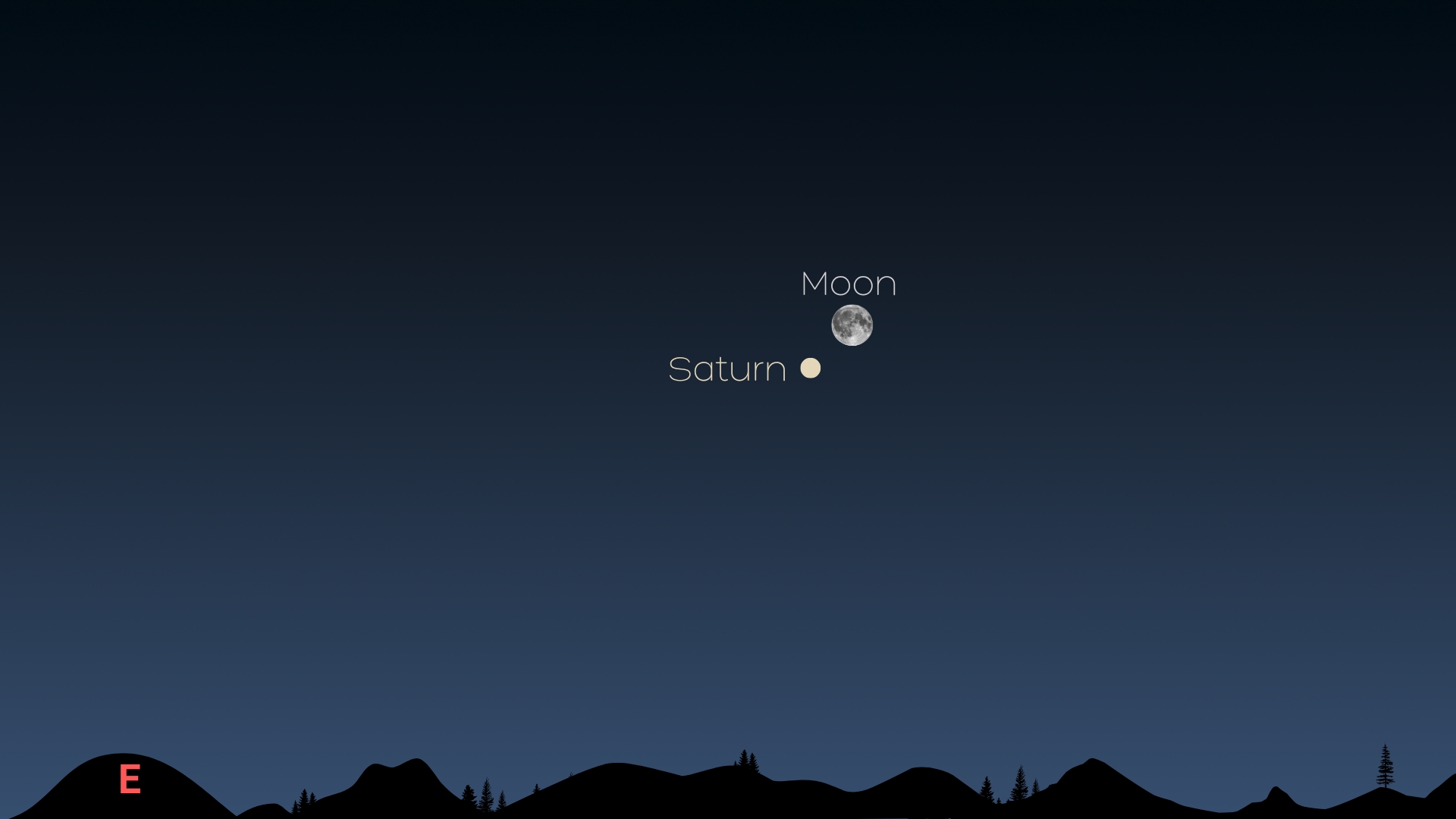
Next comes Saturn
After you are done showing off the moon to your friends, it will be time to turn your telescope toward Saturn. Your clenched fist at arm’s length is equal to roughly 10 degrees. So, Saturn will be situated less than “a quarter of a fist” (2.2 degrees) below the moon.
Saturn’s famous ring system, as seen by us, had been growing narrower since 2017, and earlier this year it narrowed to nothing. On March 23, the rings appeared “edge-on” from our earthly perspective and in the days that followed, their angle of inclination toward Earth slowly increased, reaching 2.2 degrees on May 5. And yet, the rings were still all but invisible because while the south side of the rings was tipped toward us, the sun was illuminating the north side. On May 6, the sun began shining on the south side and the rings reappeared, albeit as nothing more than a thin bright line bisecting Saturn’s disk.
On Sunday, any telescope with an eyepiece magnifying at least 30x will show the rings, although they still appear as nothing more than a bright narrow line, as their inclination angle has again diminished to just 1.4 degrees.
But be patient, for things will gradually improve in the years to come.
During the spring, Saturn reached what we might call the autumnal equinox of its orbit, at which its north pole was tilted forward, and its ring plane appeared edge-on toward the sun. A quarter of its 29.46-year orbit later, in April 2032, will be Saturn’s winter solstice, when the southern hemisphere, and the southern face of the rings, will be most exposed to the sun and to us. At that time, the rings will be tilted at a maximum of 26.75 degrees in our direction (referred to as the maximum “Saturnicentric latitude”).
And so, a year from now . . . and especially two years from now . . . the rings will be more readily visible and then, even for experienced, seasoned observers, the sight of Saturn’s rings in a moderate or large telescope will bring surprise and astonishment!
They’re not all that close
A final “gee-whiz” fact that you can reveal to your friends is that what you are seeing in Sunday’s sky is an illusion of perspective. The moon and Saturn are nowhere near each other in space. The moon will be 227,000 miles (365,000 km) from Earth, while Saturn is more than 3,500 times farther away at 797 million miles (1.283 billion km).
Joe Rao serves as an instructor and guest lecturer at New York’s Hayden Planetarium. He writes about astronomy for Natural History magazine, Sky and Telescope and other publications.
Editor’s Note: If you get a great photo of the moon and Saturn and would like to share it with Space.com’s readers, send your photo(s), comments, and your name and location to spacephotos@space.com.
Stay Informed With the Latest & Most Important News
Previous Post
Next Post
-
 012024 in Review: Highlights from NASA in Silicon Valley
012024 in Review: Highlights from NASA in Silicon Valley -
 02Panasonic Leica Summilux DG 15mm f/1.7 ASPH review
02Panasonic Leica Summilux DG 15mm f/1.7 ASPH review -
 03How New NASA, India Earth Satellite NISAR Will See Earth
03How New NASA, India Earth Satellite NISAR Will See Earth -
 04And Thus Begins A New Year For Life On Earth
04And Thus Begins A New Year For Life On Earth -
 05From Polymerization-Enabled Folding and Assembly to Chemical Evolution: Key Processes for Emergence of Functional Polymers in the Origin of Life
05From Polymerization-Enabled Folding and Assembly to Chemical Evolution: Key Processes for Emergence of Functional Polymers in the Origin of Life -
 06Astronomy Activation Ambassadors: A New Era
06Astronomy Activation Ambassadors: A New Era -
07SpaceX launch surge helps set new global launch record in 2024












